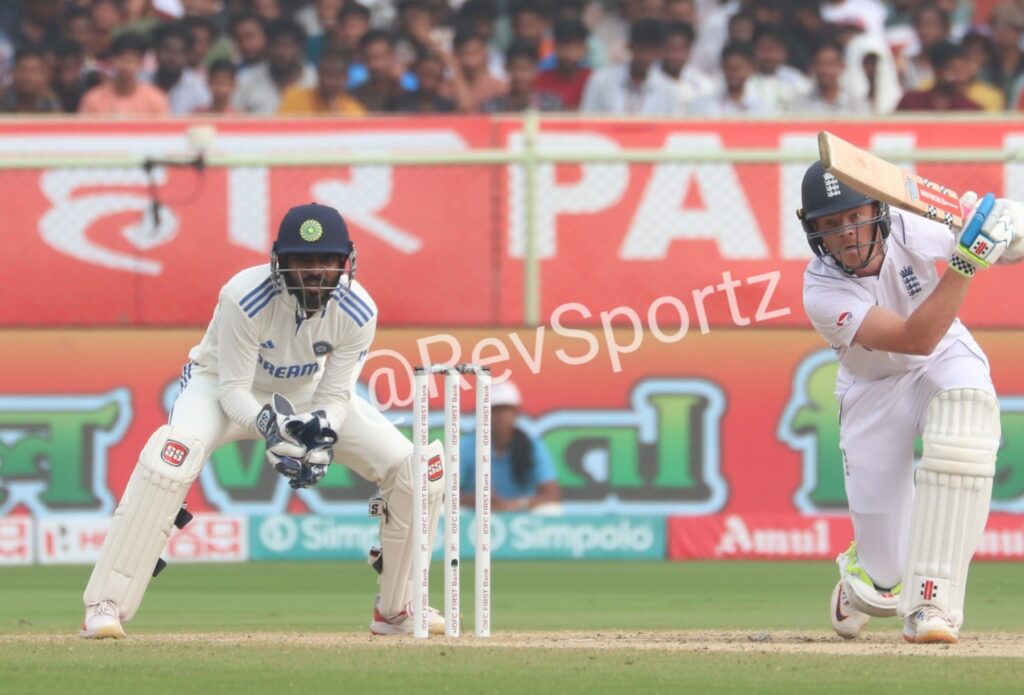Are you earning your keep? This question will become louder each time KS Bharat fails with the bat in this India-England series, irrespective of how he fares with the big gloves. It may be unkind on the player, who is basically the victim of a template set years ago.
A wicketkeeper in a Test team has to be an able batter. This was hammered into the heads of those who run teams by Adam Gilchrist. He averaged 47-odd in the longest format at a strike rate of 81-plus. This redefining the role of a keeper was taken forward in the Indian context by MS Dhoni and then Rishabh Pant.
Truth be told, they raised unfair expectations. A keeper can’t always be a game-changer. His primary job is to be safe behind the stumps. Bharat’s harshest critics can’t say that he has flopped in that role. He was above average against the moving ball in the World Test Championship final last year.
Also Read: Utterly Unique Bumrah Holds Key to This Series
However, that was in England. The game changes when it comes to India, where a keeper has to be at least an accumulator with the bat. Last year, in the series against Australia, in the first three Tests, he had to bat on pitches where even the bowler did not know how much the ball was going to spin. Those were not the surfaces to judge a keeper’s skills behind or in front of the stumps.
But the ongoing series against England has seen pitches of a more ‘normally Indian’ kind, which are not so out and out in favour of spinners. Bharat’s keeping has not been visibly below-par. His batting has. He has not fared like a player who has a first-class triple-century to his name.
Take the Visakhapatnam Test, for instance. In both innings, he got out playing forcing shots against the spinners. Go through the replays. Those were rank dollies which ought to have been put away. On his home turf, when not under enormous pressure, those were deliveries any batter at this level will feast on. All Bharat managed was to lob catches.
That was the disconcerting part. A team which plays with six batters and expects the wicketkeeper to be a part of that unit can’t afford this. Bharat has to contribute with the bat to keep his place in the XI. Discounting the three Tests on raging turners last year, his returns in India are 44, 41, 28, 17 and 6. At least four of those innings were on pitches good for batting.
For more sports related information CLICK HERE- https://revsportz.in/category/editorial/
Such scores would have been acceptable had he been playing at No. 8 or 9, but in a team with five specialist bowlers, the wicketkeeper has to score more. Forget Pant, Bharat’s predecessor, Wriddhiman Saha, did better with the bat on Indian soil. The team management noticed this and included Dhruv Jurel as back-up keeper in the squad for the first two Tests.
Jurel, the 23-year-old from Uttar Pradesh, averages 46.47 in 15 first-class matches. Those figures may have come mostly from domestic games, but they are impressive enough to get him a chance should Bharat not score more substantially. By having Jurel in the squad, the selectors have sent a signal that they are not totally reliant on Bharat and are keeping options open.
Inability to chip in with the bat doesn’t go with the formula this team follows, which is six batters including the wicketkeeper. And there are new names coming up all the time. There is competition. It’s Bharat’s turn to feel that. He may not be benched immediately, but it’s time he made a more telling contribution with the bat.
Also Read: Jaiswal, Gill, Bumrah, and catching lift India to victory




